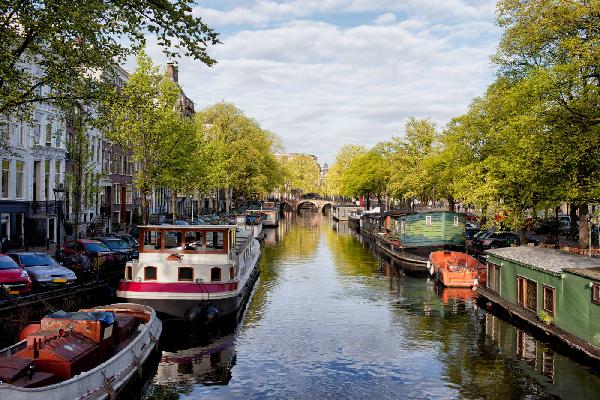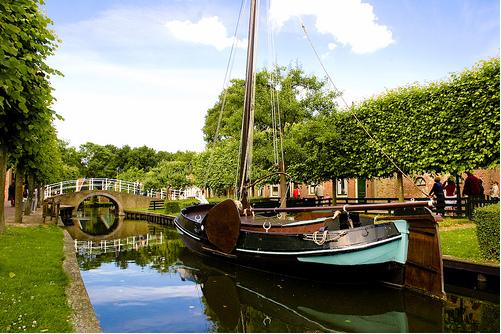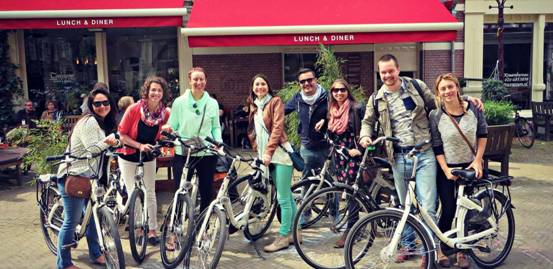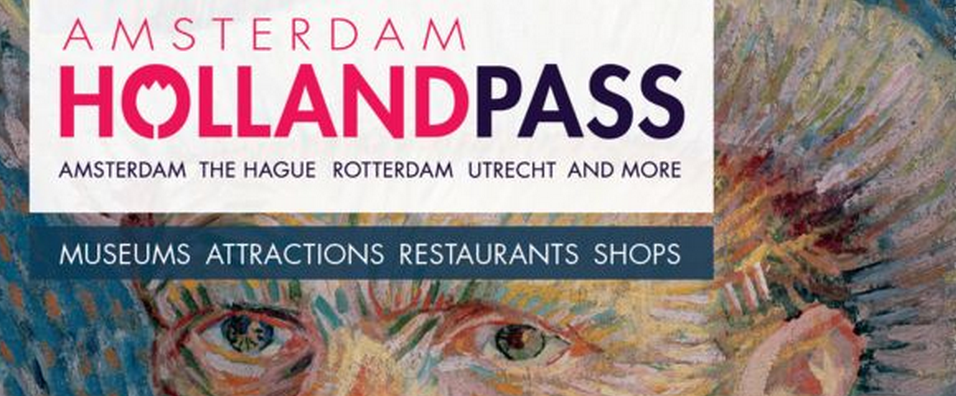A Comprehensive Travel Guide: Amsterdam, Afsluitdijk, and Giethoorn
This guide details a classic Dutch itinerary that takes travelers from the vibrant capital of Amsterdam, through a monumental feat of engineering at the Afsluitdijk (Afsluitdijk), and into the serene, canal-laced village of Giethoorn, often called the "Venice of the North." This journey offers a perfect blend of urban energy, historical ingenuity, and bucolic tranquility, providing a multifaceted experience of the Netherlands.
Part 1: Amsterdam - The Vibrant Capital
Amsterdam, the capital of the Netherlands, is a city of captivating contrasts. Known for its elaborate canal system, iconic narrow houses, world-class art museums, and a rich, often turbulent history, it is a city that invites exploration. Built on a foundation of trade and tolerance, Amsterdam's open-minded spirit is palpable in its diverse neighborhoods and vibrant cultural scene.
Key Attractions in Amsterdam
Museumplein (Museum Square): Home to the country's most prestigious museums. The Rijksmuseum boasts masterpieces by Rembrandt, Vermeer, and Frans Hals. The Van Gogh Museum houses the world's largest collection of the artist's works. For modern and contemporary art, the Stedelijk Museum is a must-visit.
Anne Frank House: A deeply moving museum located in the actual hiding place where Anne Frank wrote her famous diary during World War II. Advance online booking is essential, as tickets sell out weeks in advance.
Canal Belt (Grachtengordel): A UNESCO World Heritage site, the concentric rings of canals are best explored by foot or, quintessentially, by boat. A canal cruise offers a unique perspective of the city's architecture and bridges.
Jordaan: A charming neighborhood with narrow streets, quaint courtyards, independent art galleries, and cozy cafés. It's an ideal area to wander without a strict itinerary.
Vondelpark: The city's largest and most popular park, perfect for cycling, picnicking, or simply relaxing and people-watching.
De Negen Straatjes (The Nine Streets): A boutique shopping district nestled within the canal belt, featuring a high concentration of unique designer shops, vintage stores, and delightful eateries.
Amsterdam Food & Drink
Stroopwafel: Two thin waffles with a caramel-like syrup filling. For the best experience, get a fresh, warm one from a street market and place it on top of your hot coffee cup to soften the syrup.
Bitterballen: A classic Dutch bar snack; deep-fried, crispy balls filled with a thick, savory ragout. Typically served with mustard.
Poffertjes: Small, fluffy pancakes dusted with powdered sugar and often served with a pat of butter.
Raw Herring (Haring): A traditional Dutch delicacy. If you're adventurous, try it the local way by holding the fish by its tail and lowering it into your mouth.
Indonesian Rijsttafel: A "rice table" consisting of many small dishes, a culinary legacy of the Dutch colonial past. It's a fantastic way to sample a wide variety of flavors.
Jenever: The traditional Dutch juniper-flavored spirit, predecessor to gin. Sample it in a traditional tasting house like Wynand Fockink.
Transportation in Amsterdam
Amsterdam is a very walkable city, but its public transport is efficient and comprehensive.
Walking and Cycling: The best ways to explore the city center. Numerous bike rental shops are available.
GVB Public Transport: This includes trams, buses, and metros. The most convenient option for visitors is an OV-chipkaart (reloadable public transport card) or purchasing multi-day GVB tickets which offer unlimited travel on trams, buses, and metros.
Taxis & Ride-Sharing: Available but can be expensive. They are not permitted in many narrow streets in the center.
Amsterdam Accommodation Tips
Amsterdam offers a wide range of accommodation, from luxury hotels to hostels and boutique B&Bs. It is advisable to book well in advance, especially during peak season. Popular areas to stay include:
Canal Belt: For classic charm and central location.
Jordaan: For a quieter, more residential feel with easy access to the center.
De Pijp: A vibrant, trendy neighborhood known for its market, cafés, and nightlife.
Oost (East): A more modern area with good transport links and a diverse food scene.
Part 2: Afsluitdijk (Afsluitdijk) - The Great Dyke
The Afsluitdijk (Enclosure Dam) is a stunning 32-kilometer (20-mile) causeway and dyke that connects the provinces of North Holland and Friesland. Completed in 1932, it is one of the most impressive engineering marvels in the Netherlands, a country famous for its water management. The dyke turned the saltwater Zuiderzee (South Sea) into the freshwater IJsselmeer lake, protecting large parts of the country from flooding and creating new land (polders).
Key Experiences at the Afsluitdijk
The Drive/Ride: The experience of traveling across the dyke itself is awe-inspiring. On one side is the vast IJsselmeer, on the other is the Wadden Sea, a UNESCO World Heritage site.
Afsluitdijk Wadden Center: Located near the town of Kornwerderzand, this visitor center is an essential stop. It offers interactive exhibits on the history, engineering, and future of the dyke, as well as the unique ecology of the Wadden Sea.
Kornwerderzand Museum: This museum focuses on the military history of the Afsluitdijk, specifically the Kazematten (casemates/bunkers) that successfully defended the dyke during the German invasion in 1940.
The Monument: At the point where the dyke was closed in 1932 stands a simple stone monument with a tower offering panoramic views.
Cycling and Walking Paths: Dedicated paths run alongside the road, allowing for an even more immersive experience. You can feel the wind and truly appreciate the scale of the project.
Transportation to and Across the Afsluitdijk
The Afsluitdijk is traversed by the A7 highway. The most flexible way to visit is by car, as it allows you to stop at the various points of interest at your own pace. It is approximately a one-hour drive from Amsterdam to the start of the dyke. Buses also cross the dyke, but services can be infrequent, making independent stops challenging.
Part 3: Giethoorn - The Venice of the North
Nestled in the province of Overijssel, Giethoorn is a picture-perfect village seemingly frozen in time. Often called the "Venice of the North," its idyllic charm comes from its complete lack of roads in the old center. Instead, a network of canals, lined with thatched-roof farmhouses and connected by over 170 wooden bridges, serves as the primary thoroughfare. The silence is broken only by the quacking of ducks and the quiet putter of electric boats.
Key Attractions and Activities in Giethoorn
Canal Boating: The quintessential Giethoorn experience. Visitors can rent whisper-quiet electric boats, canoes, or take a guided tour boat to navigate the canals and explore the village from the water.
't Olde Maat Uus Museum: A working farm museum that showcases what life was like for a farmer/fisherman's family in Giethoorn in the early 20th century. The authentic thatched-roof building and interior provide deep cultural insight.
Walking and Cycling: While boats are primary, narrow pathways along the canals are perfect for a leisurely stroll or bike ride. Renting a bike allows you to explore the surrounding De Wieden national park.
De Wieden National Park: Adjacent to Giethoorn, this vast wetland area is a haven for birdwatchers and nature lovers. Boat tours from Giethoorn often venture into these reed beds and lakes.
Giethoorn Food & Drink
Dining in Giethoorn often comes with beautiful waterfront views.
Panenkoeken (Pancakes): Dutch pancakes, both sweet and savory, are a popular meal here.
Freshwater Fish: Given its location, dishes featuring local pikeperch or eel are common.
Cafés and Pancake Houses: Many establishments are situated directly on the canals. Booking a table in advance during peak season is recommended.
Transportation to Giethoorn
Reaching Giethoorn by public transport requires a few connections but is entirely feasible.
By Train and Bus: From Amsterdam Central Station, take a train to Zwolle. From Zwolle, take a train to Steenwijk. From Steenwijk station, bus 70 will take you directly to Giethoorn. The total journey takes approximately 2 to 2.5 hours.
By Car: Driving from Amsterdam takes about 1.5 to 2 hours. Note that you must park your car in one of the designated paid parking areas on the outskirts of the village center, as cars are not permitted within the historic core.
Giethoorn Accommodation Tips
Staying overnight in Giethoorn allows you to experience the village's magical tranquility after the day-trippers have left. Options include:
B&Bs and Guesthouses: Many traditional thatched-roof houses have been converted into charming B&Bs.
Boatels: For a unique experience, you can stay overnight on a moored boat-hotel.
Hotels: There are a few small hotels in and around the village.
Important Note: Giethoorn is extremely popular, especially in summer. Booking accommodation and activities well in advance is crucial.
Crafting Your Itinerary
A logical and efficient way to experience this trio of destinations is as a multi-day loop from Amsterdam.
Sample 4-Day Itinerary
Day 1: Arrival and Exploration of Amsterdam. Settle into your accommodation, explore the Jordaan district, take an evening canal cruise, and enjoy a classic Dutch dinner.
Day 2: Deep Dive into Amsterdam's Culture. Visit the Rijksmuseum and Van Gogh Museum (book tickets online), wander through Vondelpark, and in the evening, experience an Indonesian Rijsttafel.
Day 3: Afsluitdijk and Arrival in Giethoorn. Pick up a rental car in the morning. Drive north towards the Afsluitdijk (approx. 1 hour). Spend 1-2 hours at the Afsluitdijk Wadden Center and driving across the dyke. Continue your drive to Giethoorn (another ~1 hour). Check into your accommodation and take an evening boat ride on the serene canals.
Day 4: Giethoorn Morning and Departure. Enjoy a peaceful morning in Giethoorn, visit 't Olde Maat Uus museum, have a pancake lunch, and then drive back to Amsterdam (approx. 1.5 hours) for your flight or onward journey.
Cultural Insights and Practical Tips
Canal Etiquette: In Giethoorn, if you rent a boat, pay close attention to the instructions and stick to the designated routes. Be mindful of your speed to avoid damaging the banks or creating waves.
The Dutch Directness:The Dutch are known for being frank and straightforward in communication. This is not meant to be rude but is a cultural norm valuing honesty and efficiency.
Sustainability:The Netherlands is a leader in sustainability. Be mindful of recycling and consider using public transport or cycling where possible.
Crowds: All three destinations are popular. To avoid the largest crowds in Amsterdam and Giethoorn, visit major attractions early in the morning or later in the afternoon, and consider traveling during the shoulder seasons (spring or autumn).
Payment:The Netherlands widely uses PIN (debit card) payments. While credit cards are accepted in most hotels and larger restaurants, it is always wise to carry some cash for smaller shops, markets, or rural areas.
Weather Preparedness:The weather can be unpredictable. Pack layers and always carry a waterproof jacket or umbrella, regardless of the forecast.
This journey from Amsterdam to the Afsluitdijk and Giethoorn encapsulates the very essence of the Netherlands: its artistic soul, its relentless battle against water turned into ingenious triumph, and its postcard-perfect rural beauty. It is a trip that promises lasting memories of wind-swept dykes, serene canals, and vibrant city streets.



